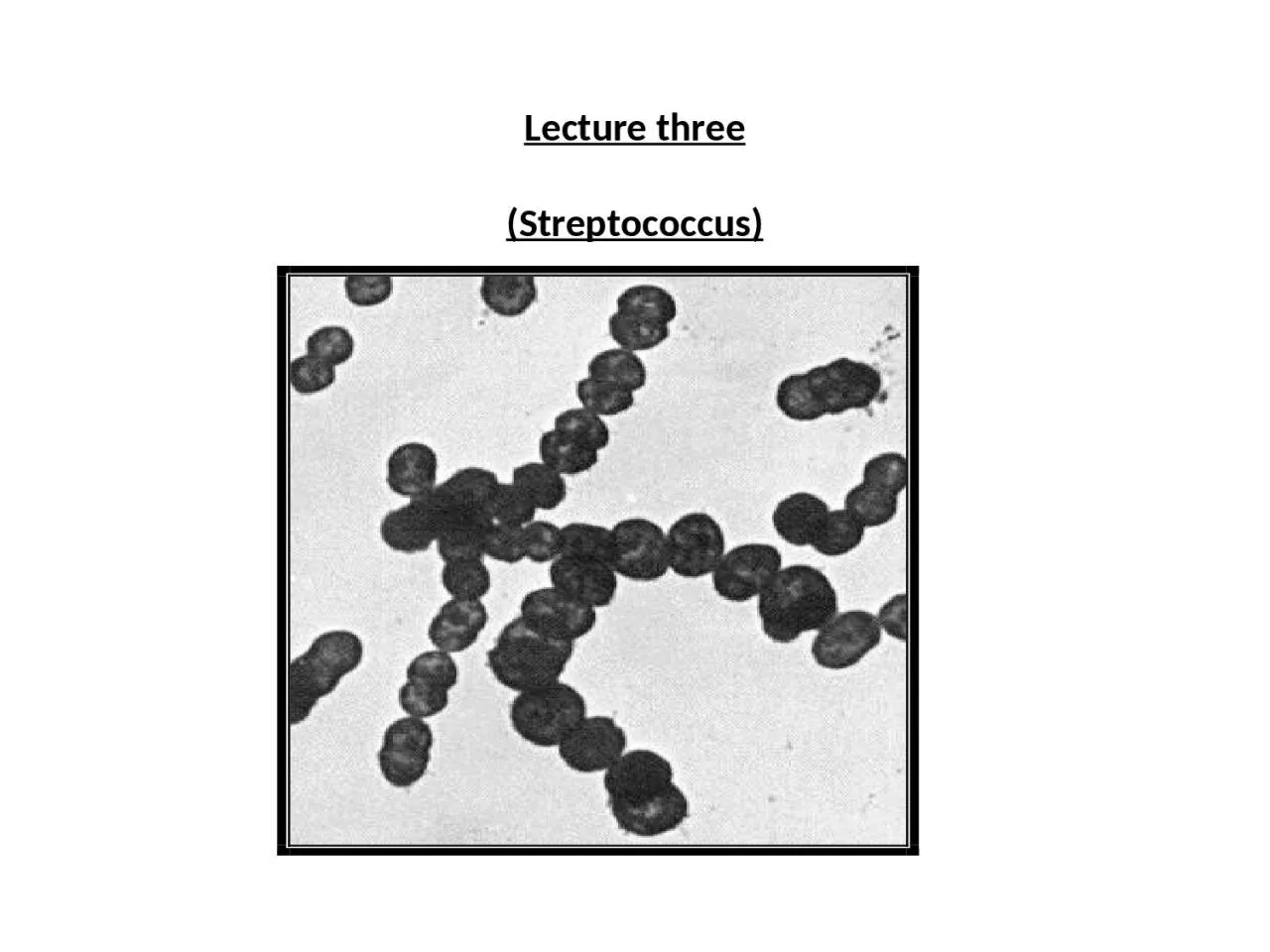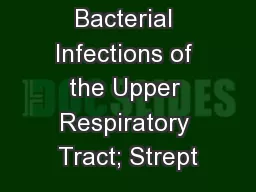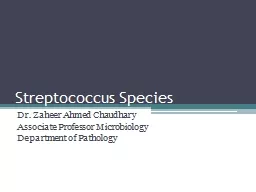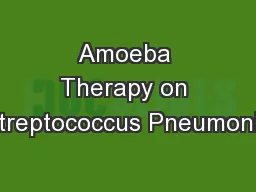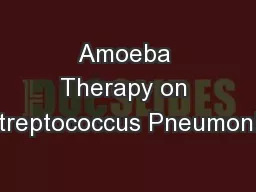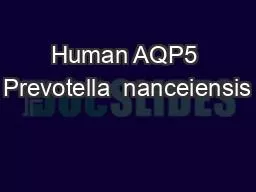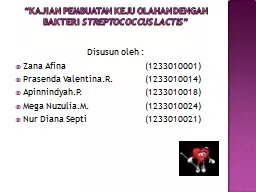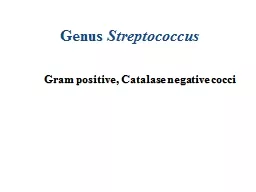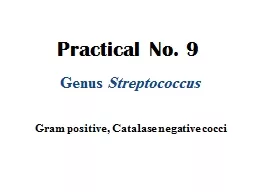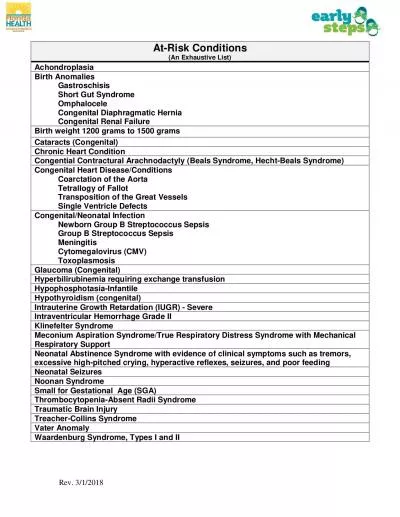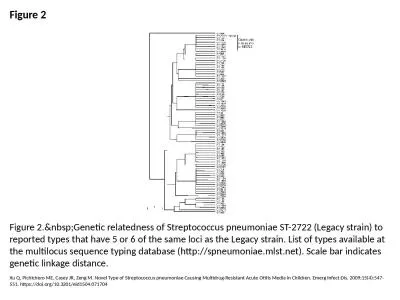PPT-Lecture three ( Streptococcus)
Author : piper | Published Date : 2023-08-25
Greek streptus flexible coccus sphere spherical or ovoid cells occurring in short or long chins pairs not in groups Capsules are not regularly formid but develop
Presentation Embed Code
Download Presentation
Download Presentation The PPT/PDF document "Lecture three ( Streptococcus)" is the property of its rightful owner. Permission is granted to download and print the materials on this website for personal, non-commercial use only, and to display it on your personal computer provided you do not modify the materials and that you retain all copyright notices contained in the materials. By downloading content from our website, you accept the terms of this agreement.
Lecture three ( Streptococcus): Transcript
Download Rules Of Document
"Lecture three ( Streptococcus)"The content belongs to its owner. You may download and print it for personal use, without modification, and keep all copyright notices. By downloading, you agree to these terms.
Related Documents

